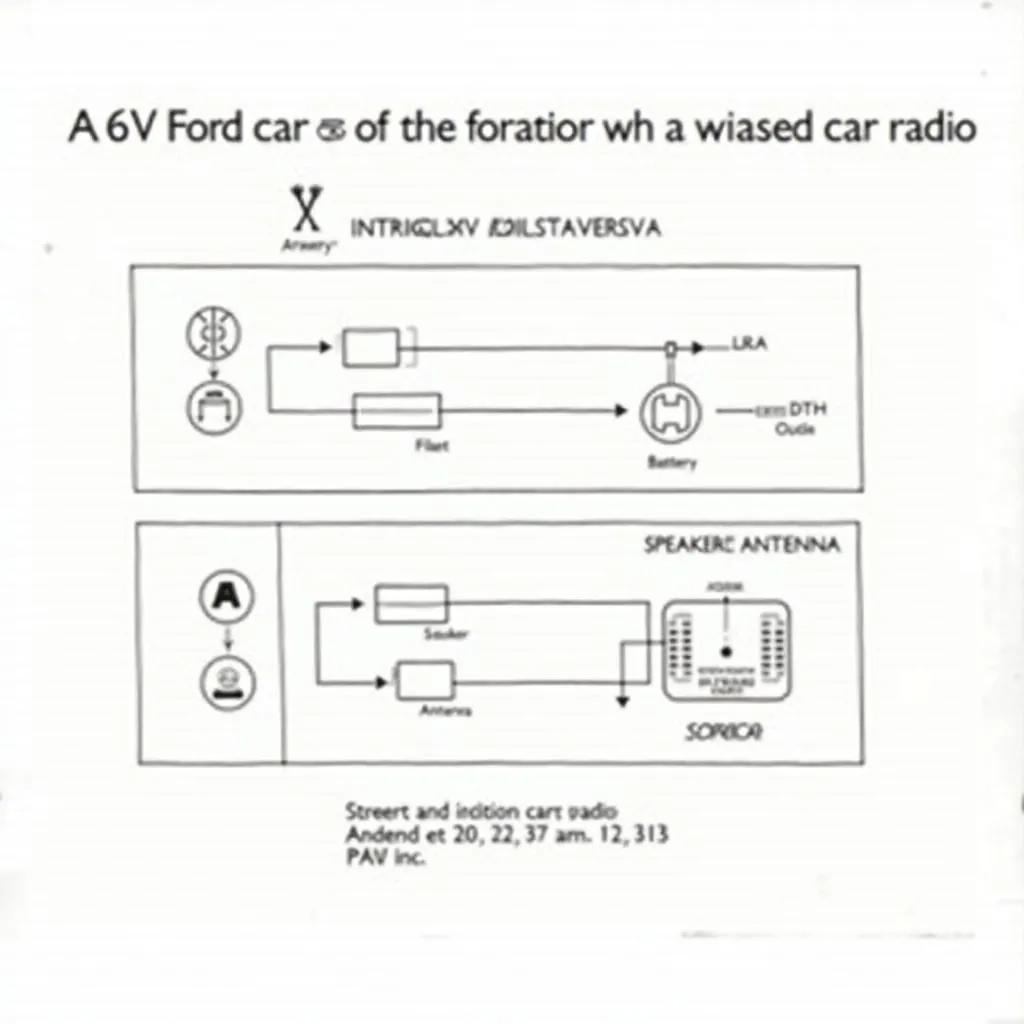Imagine this: you’re walking towards your car, keys in hand, ready to drive to work. But as you hit the unlock button, nothing happens. You try again, and again, but your car remains unresponsive. You start to suspect that something’s wrong, and then you notice it – the blinking anti-theft light on your dashboard. If this scenario sounds familiar, then you’ve come to the right place. This article will delve into the meaning of “anti-theft” in a car and how to potentially resolve issues when they arise.
Understanding Your Car’s Security System
“Anti-theft” refers to the security system in your car designed to prevent theft. This system comprises various components working together to protect your vehicle.
At the heart of this system lies the immobilizer. This sophisticated device prevents the engine from starting without the presence of the correct key. It works by using a transponder chip embedded in your car key that communicates with the car’s computer system. When you insert your key or are nearby with a keyless system, the chip sends a unique code to the car’s computer, effectively disarming the immobilizer and allowing your car to start.
Common Anti-theft System Issues
While anti-theft systems are generally reliable, they can occasionally experience issues that prevent your car from starting. Here’s a look at some common problems:
1. Key Fob Battery Issues
One of the most common reasons for anti-theft system problems is a dead battery in your key fob. If the battery in your key fob is depleted, it may not be able to send the correct signal to your car’s immobilizer, preventing it from disarming.
2. Key Recognition Problems
Sometimes, the issue might not be the battery but rather that the car’s system is not recognizing the key. This could be due to a variety of reasons:
- Weak Signal: The transponder chip in your key might be sending a weak signal, preventing proper communication with the car.
- Key Fob Malfunction: Internal damage or a malfunctioning transponder chip in your key fob can also prevent successful communication.
- Receiver Module Issues: The receiver module in your car responsible for receiving the signal from your key fob may be faulty.
3. Other Potential Causes:
Beyond key-related problems, other issues could trigger your anti-theft system:
- Faulty Wiring: A loose connection or damaged wire in the anti-theft system’s circuitry can interrupt the communication flow.
- Low Car Battery: A weak or dead car battery can sometimes interfere with the proper functioning of the anti-theft system.
- Control Module Problems: In some cases, a malfunctioning engine control module (ECM) or body control module (BCM) might be the culprit.
Troubleshooting Anti-theft System Problems
Now that you have a better understanding of the system and its potential issues, let’s explore some troubleshooting steps:
1. Check Your Key Fob Battery
Start with the simplest solution: replace the battery in your key fob. Key fob batteries typically last 3-4 years, and a simple replacement might be all you need.
2. Attempt to Start Your Car Using the Physical Key
If replacing the battery doesn’t work, try using the physical key (usually hidden inside the key fob) to lock and unlock the driver’s side door manually. This may help to reset the anti-theft system.
3. Check Your Car Battery
A weak or dead car battery can lead to a multitude of problems, including issues with the anti-theft system. Inspect your car battery and jump-start your car if necessary.
4. Consult a Professional
If none of the above steps work, it’s best to consult a professional mechanic or an automotive locksmith. They have the expertise and specialized tools to diagnose and fix complex anti-theft system problems. Consider reaching out to CARDIAGTECH for specialized diagnostic services and support.
FAQs: Common Questions About Anti-theft Systems
What does the anti-theft light mean?
The anti-theft light, often a flashing car icon or a key symbol, indicates that your car’s immobilizer system is engaged. For more detailed information about the anti-theft light, you can visit our page What Does the Anti-Theft Light Mean?.
How do I know if my car has an anti-theft system?
Most modern vehicles come equipped with some form of anti-theft system. You can find out by checking your owner’s manual or looking for visual indicators like a flashing light on your dashboard or stickers on your car windows.
Can I fix my anti-theft system myself?
While some anti-theft system problems, like a dead key fob battery, can be easily fixed, others require specialized knowledge and tools. For more complex issues, it’s best to seek help from a qualified mechanic or an automotive locksmith. For guidance on whether your vehicle has an anti-theft system, you can check out this article: Does My Vehicle Have Anti-Theft?
What is the difference between active and passive anti-theft systems?
Active anti-theft systems require driver intervention, such as arming the alarm, while passive systems, like immobilizers, work automatically. To learn more about passive anti-theft systems and how they work, you can read our article Does My Car Have Passive Anti-theft?.
What does anti-theft system mean in a car?
In essence, an anti-theft system encompasses all the security features designed to deter theft. It’s your car’s primary defense mechanism against unauthorized access and theft. To gain a comprehensive understanding, visit our dedicated page on What Does Anti-theft System Mean?.
Understanding your car’s anti-theft system is crucial for ensuring the security of your vehicle. While modern systems are reliable, being familiar with potential issues and troubleshooting steps can save you time and frustration.


